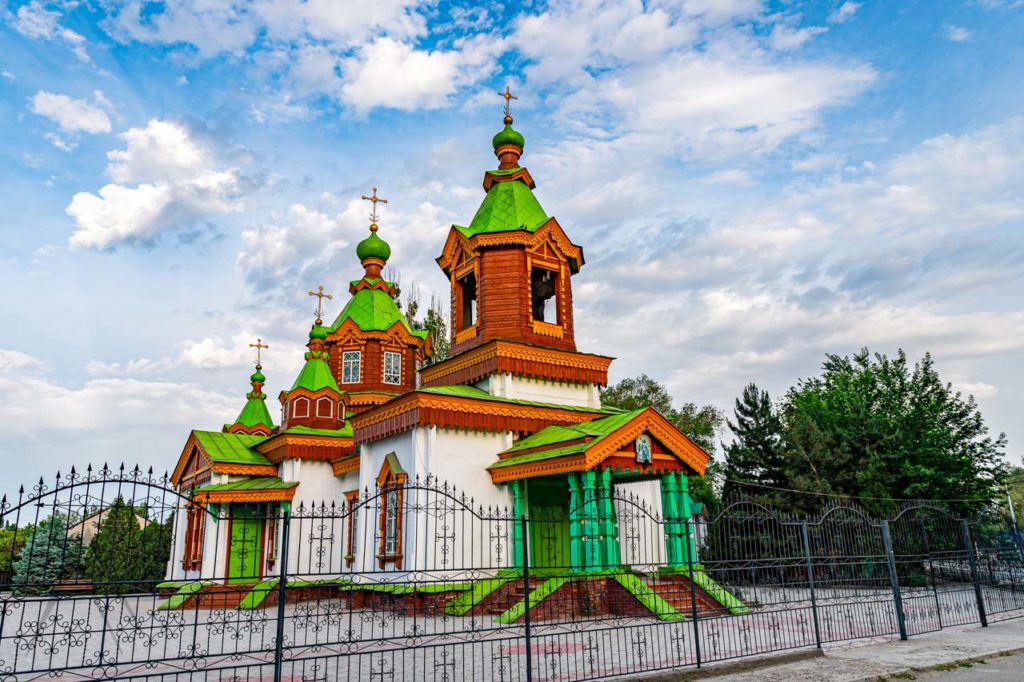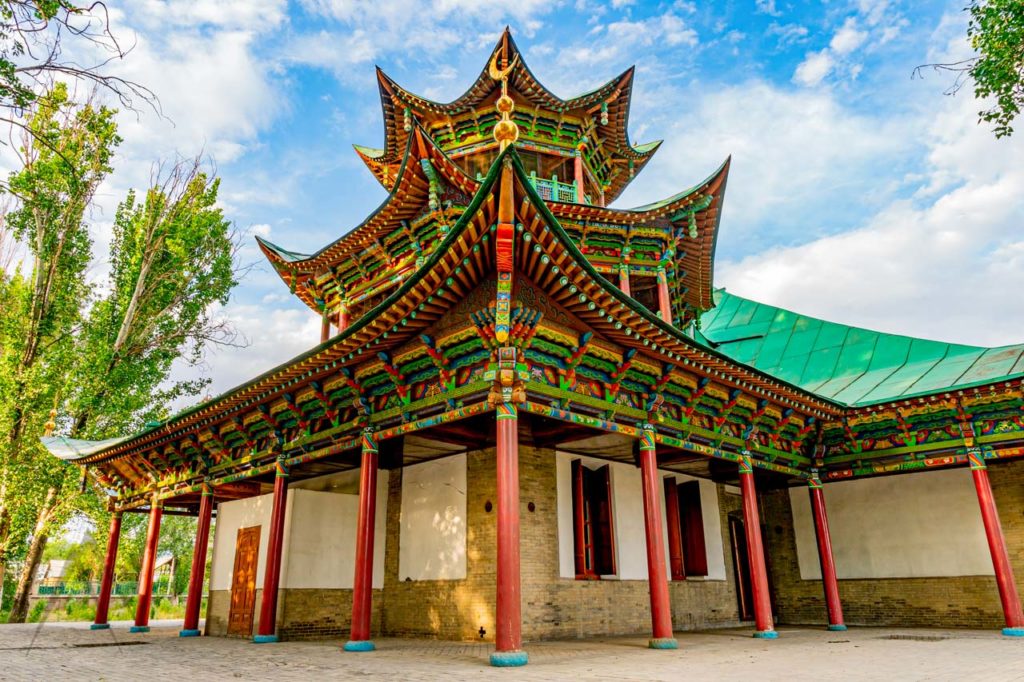Zharkent
Zharkent
350 km from Almaty and only 100 km from Gulja in China, there is a town called Zharkent, which is know as the “gate to the east” as it is nearby the main road between China and Kazakhstan. Zharkent is the nearest largish town located right next to the Khorgos border, about 20km to the west. The population of Zharkent is around 33 500 with mostly Uyghur ethnicity and you can really feel Chinese influence in the town.
Southeast from Zharkent, is the Karakum Desert, which is known as a little sister of its namesake in Turkmenistan as they both consists largely of the almost black sand for which they are named after. Further to the south, the Ili River forms a marshy landscape, while the 4 000-meter plus heights of the Toksanbay mountain range can be seen in the north. Zharkent is a perfect place to roam for adventures looking for remote locations. There are several unknown valleys like Usek, Burchan, Tishkan and Chizin also to be explored. Zharkent’s central street is called Zhibek Zholy which means the Silk Road which is very appropriate as one of the branches of the Silk Road was present here. The srtreet divides the city into two, to the east and west Zharkent.
Zharkent History
Zharkent was established in 1881 (or 1882) at the border of the Russian Empire and China of that time at the place of the already mentioned ancient trading route. Zharkent was first primarily a refugee’s settlement for Uighur and Dungan muslim farmers from Gulja who arrived there in 1881.
The reason for the refugees arriving, was the Russo-Chinese St. Petersburg peace treaty, where it was decided that the Eastern Ili Valley is to be returned to China. The muslim people living in the area were given the choice to stay or to leave to the Russian side and within a year the village grew already to the status of a town. Zharkent was also the new location of the Russian garrison in the area.
In 1943 the town was renamed Panfilov in honor of Major General Ivan Panfilov. Panfilov was the commander of the 316th Rifle Division and a hero of the defense of Moscow.
Zharkent Mosque
Although Zharkent doesn’t have any sights, Tsarist-era mosque here is remarkable with elements of Chinese and Central Asian architecture. The mosque is circled by a line of red pained wooden columns which support the protruding green roof, turned up at the corners and it is named Pik Han.
The wooden interior, spacious enough to hold 1 000 worshippers with the wooden columns support a decorated, latticed balcony. The minbar at the far end of the room has a strongly Chinese feel, and is surrounded by Chinese-style lanterns. The mihrab behind it, a scalloped niche with a door in the back, in contrast draws more heavily from Central Asiatic traditions. The walls surrounding it are decorated with beautiful geometrical and floral designs. Beams on the wooden ceiling above are striped, like the skin of a tiger. The building was constructed without the use of nails.
In 1887, the leaders of the Muslim community of the young town decided to raise the funds to construct a mosque. The mosque was completed in 1892. It survived a major earthquake, as well as neglect in the early Soviet period when it was used as a store. The mosque was restored in the 1970s which turned the Zharkent Mosque in practice into an Architectural and Historical Museum. Today it remains officially a museum.
The mosque is entered through a powerful arched gate made in the Central Asian style. It is painted white and attractively decorated with engraved half-columns with Arabic inscriptions and floral designs. On your right, as you pass through the gate, is a portrait of Yuldashev, swathed in furs and sporting his medals. On reaching the courtyard beyond, look back at the gate through which you have just passed to get an excellent impression of the mix of architectural styles used in the construction of the complex. The gate is topped by a minaret in the form of a delightful two-storied pagoda. There are brick cupolas of a more central Asian inspiration on both sides of it. The windows below have a more Russian feel to them.


Sacred tree of Zharkent
The sacred tree of Zharkent has its origin in the Tengri beliefs, where trees are seen as something connecting the underworld with the sky gods, and protecting people from evil. It is also said that our saying “to touch the wood” has Tengrist origins. This tree, like the many others in Kazakhstan and Central Asia, can be easily recognized by the many strips of fabric attached to it. Nowadays the strips are mostly filled with prayers to Allah instead of the Tengri gods. This beautiful old tree is located near the Chinese mosque of Pik Han and it is believed to have powerful medicinal properties.
Travel to Zharkent
Zharkent is located quite far from Almaty but it is still easily reached when traveling to see the Charyn canyon, Altyn Emel desert and the Chunja hot springs.
Other sights near Zharkent
Page updated 12.12.2022